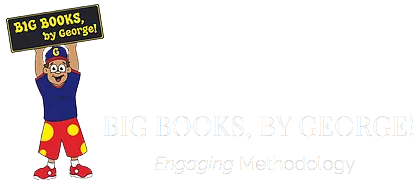The Transformative Role of Big Books in Preschool Education
When it comes to early education, there’s a towering, often overlooked hero that sparks a love for reading, fosters language development and cultivates social skills among the littlest of learners. This hero doesn’t wear a cape or boast otherworldly powers, but its influence is undeniable in the realm of preschool education. We’re talking about big books—those larger-than-life reading materials that open up a world of learning opportunities for young children.
The size and design of these books are not mere novelties; they hold a special place in preschool classrooms for their unique ability to engage young children in the reading process. In this post, we’ll delve into why big books for preschool are an essential tool for educators and a delightful experience for children, laying the foundation for a lifetime of reading and learning.
Big Books as Interactive Learning Tools
Big books are not just oversized reading material; they are interactive tools that transform reading into a shared, engaging activity. Their large print and vivid illustrations draw children in, making it easier for little eyes to focus and follow along. This shared visual experience is a cornerstone of learning, as children not only hear the story but also see it play out on a grand scale. These features of big books for preschool are especially beneficial for children who are visual or kinesthetic learners, providing a tactile and visually stimulating experience.
Furthermore, big books encourage group participation. As the educator reads, children can gather around, and each one has a chance to see the illustrations and text clearly. This inclusivity promotes a sense of community within the classroom and reinforces the concept that reading is a pleasurable activity that can be enjoyed together.
Language Development and Big Books
The larger-than-life text of big books for preschool serves as an excellent resource for introducing new vocabulary and concepts to young children. The big, bold words are not just for show—they allow children to see and identify letters and sounds, making connections between the spoken and written word. As the teacher points out words and refers to illustrations, children start to make associations between the two, building their understanding of language.
This interactive storytelling approach also encourages children to predict and ask questions about the story, which is pivotal for developing critical thinking skills. They learn to anticipate story outcomes, understand cause and effect, and make inferences based on the text and pictures before them—fundamental skills in language comprehension.
Fostering a Love for Reading
The excitement that big books bring to the reading experience can instill a lasting love for literature in young children. Big books for preschool are designed to be inviting and fun, turning reading into a game rather than a chore. This positive association with reading at an early age can influence a child’s attitude towards books for years to come with BBBG.
When children are actively engaged in the story, they’re more likely to express their thoughts, feelings, and connections to the book. This level of engagement creates an emotional bond with reading, making it more likely that children will seek out books in the future, eager to relive the enjoyment they experienced in their early learning settings.
Enhancing Social Skills with Big Books
Reading big books in a group setting offers a wonderful opportunity for preschoolers to develop their social skills. As they listen and discuss the story with peers, they learn valuable lessons in turn-taking, listening, and sharing ideas. Big books for preschool thus become a social catalyst, prompting discussions that require children to practice patience and respect for others’ opinions.
Moreover, these group interactions during big book sessions help children understand different perspectives and develop empathy. As they discuss character motivations and story events, they learn to see the world through others’ eyes, a crucial aspect of social-emotional growth.
Big Books as a Springboard for Extended Learning
The benefits of big books for preschool don’t end with the last page. These resources can be the starting point for a variety of extended learning activities. After reading a big book, teachers can encourage children to engage in related art projects, role-playing, or games that reinforce the themes and lessons of the story.
These activities not only solidify the children’s understanding of the story but also allow them to express their creativity and apply their new knowledge. By extending learning beyond the book, children are encouraged to think critically about the story and its applications in the world around them.
Conclusion
Big books for preschool are a towering beacon in the classroom, signaling that reading time is not just a learning experience but an engaging and enjoyable activity. The significant benefits of these resources are evident in the way they captivate young minds, introduce new language concepts, foster a love for literature, enhance social skills, and serve as a platform for extended learning opportunities.
In our quest to create enriching early educational environments, we cannot overlook the power and potential that big books hold. They are more than just oversized pages; they are keys that unlock the imaginations and intellects of our youngest learners. By incorporating big books into the preschool curriculum, educators are not only teaching children how to read—they are opening doors to a world where reading is a treasured pastime, and learning is a delightful, shared experience.
As we embrace the future of early childhood education, let’s continue to recognize and utilize the transformative role of big books. Their presence in our classrooms can make a profound difference in the educational and developmental trajectories of preschoolers, fostering a generation of eager readers and lifelong learners. So, let’s turn those giant pages together and witness the growth, wonder, and excitement that unfold.
Read More:
